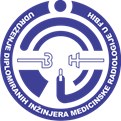MRI mapping of knee cartilage in early diagnosis of osteoarthritis: a comparative analysis of advanced sequences
DOI:
https://doi.org/10.48026/issn.26373297.2025.1.16.3Keywords:
osteoartritis koljena, MRI mapiranje, T2 mapiranje, T1ρ, dGEMRIC, UTE, 3D DESS, MMF, kvantitativna magnetna rezonanca, proteoglikan, hrskavicaAbstract
Abstract
Introduction: Osteoarthritis (OA) of the knee is the leading cause of disability in the middle-aged and elderly population. Early detection of degenerative cartilage changes is crucial for timely therapeutic intervention and slowing the progression of the disease. Standard radiological methods often do not provide insight into the biochemical changes preceding morphological degeneration.
Objective: This review aims to evaluate the diagnostic value of different MRI mapping sequences (T2, T1ρ, dGEMRIC, UTE, 3D DESS and MMF) in the early detection of biochemical changes in knee cartilage in OA, and to compare their technical and clinical characteristics.
Methodology: 15 reviews of research published in the last ten years were analyzed, which used quantitative MRI sequences in assessing cartilage changes. Comparative analysis was performed based on the number of subjects, MRI techniques applied, results obtained and clinical validation.
Results: T2 and T1ρ sequences are highly sensitive to disturbances in the collagen network and proteoglycan content, while dGEMRIC remains the reference method for the evaluation of glycosaminoglycans, despite the need for contrast. UTE and MMF provide additional insight into the surface and calcified zones of the cartilage, while 3D DESS enables high morphological resolution within a short time. The combination of multiple sequences shows the best diagnostic value. Most studies confirm that quantitative MRI mapping allows the detection of OA in the preclinical phase.
Conclusion: MRI mapping techniques are an extremely promising tool for early diagnosis of knee OA, with the potential to replace conventional methods in clinical practice. Additional prospective research on larger samples, as well as standardization of protocols, is needed to enable wider application of these methods.

Downloads
Published
How to Cite
Issue
Section
License
Copyright (c) 2025 Armin Papracanin, Muris Bečirčić, Sabina Prevljak, Semra Šeper, Deniz Bulja

This work is licensed under a Creative Commons Attribution 4.0 International License.
Copyright & licensing:
This journal provides immediate open access to its content under the Creative Commons CC BY 4.0 license. Authors who publish with this journal retain all copyrights and agree to the terms of the above-mentioned CC license.



